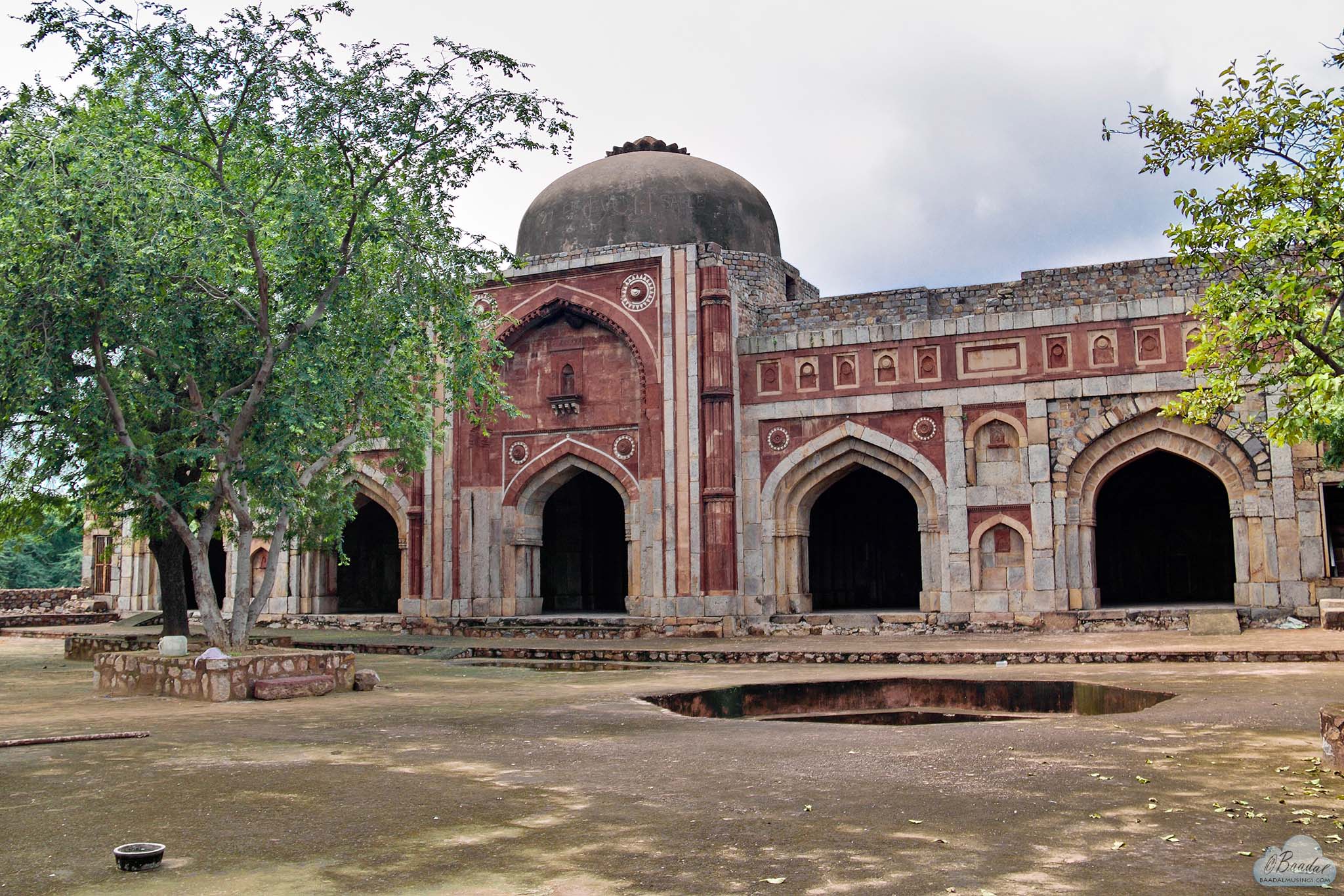Although much is known about Jamali’s identity, there is no trace in history of Kamali’s name. Some say they were husband and wife, others deem them saint and disciple. Yet others say Kamali was another Sufi saint, yet an earlier description at the entrance of the mosque recognizes them as brothers. If you ask any Heritage expert from Delhi, they will tell you that Jamali and Kamali were male lovers who still speak the story of their passion from their graves that lie right next to each other in the heart of Mehrauli Archaeological Park.
Jamali was a pseudonym for Shaikh Fazlu’llah or Jalal Khan, a Sufi Saint who lived across the Lodi and Mughal dynasties. He was the court poet of Sikander Lodi who continued to enjoy patronage at the Mughal courts of Babur and Humayun, whom he also befriended. True to his name, which roots from ‘Jamal’ meaning ‘beauty’ in Urdu, Jamali’s poetry reflects traditions of Persian Mysticism, and finds a place in the Guru Granth Sahib. Kamali in Urdu means ‘miracle’, and the identity behind the name remains a mystery.

The mosque was commissioned by him in 1529 CE and is now a non-living heritage structure, i.e., prayers and practice are barred inside the protected monument. The tomb was constructed by Jamali’s disciples and followers, where he was buried after his death in 1536. It is unknown when Kamali was buried next to him.
The architecture of both marble graves classifies them as masculine. The alignment differs from the graves of other masters and disciples in Delhi. A heritage conservationist of Delhi notes, “…(the graves) are rather odd. They have been placed intentionally to convey something special. They are meant to convey love.”
The tomb is the most well-preserved of Delhi – the ceiling retains original staccato work which is inlaid with blue and yellow glaze tiles. “Such a combination of stucco work and glaze tiles is not to be seen anywhere else in Delhi”, says scholar and filmmaker Sohail Hashmi. It’s beauty has been aptly compared to the experience of “stepping into a jewelry box”. The walls are adorned with inlaid tiles inscribed with Jamali’s poems.
When Karen Chase visited Jamali Kamali, she was overcome with imaginary visions of the tales of the two lovers. Out of this confluence of history and fiction was born her book – Jamali-Kamali: A Tale of Passion in Mughal India. Months later, she found an excerpt of the poems she had fictitiously attributed to Jamali quoted as fact on a travel portal to Delhi. This incident reflects on the unmonitored dissemination of information that leads to the creation of myth. “Two tombs were found lying side by side and popular imagination comes up with conjectures like Jamali-Kamali!” says Hashmi.
Many scholars disagree with the narrative of homosexual love between Jamali and Kamali. “There was love between Sufi saints and disciples, but it should not be understood as ‘homosexual’ because it was on a plane that transcended the physical. There was pining and longing for each other, but all on a different plane”, says Khalid Alavi, an expert of Urdu Literature at Zakir Hussain College.
The informally accepted narrative of the 21st century continues to be that of a homoerotic relationship between the two; the romance of living and dying together is a story many choose to believe. The tale is often adapted for artistic creations of a homosexual theme, and Sunil Gupta goes on to attribute the tomb as India’s only Gay Monument in his book ‘Wish You Were Here: Memories of a Gay Life’.
The story has come to symbolize an undying tale of love that retains its glory in death. The monument celebrates a relationship society is still struggling to accept, and has become an iconic ally in history for the LGBTQ+ community of the city.
Where: Mehrauli Archaeological Park, Anuvrat Marg, Opposite Qutub Minar Metro Station






